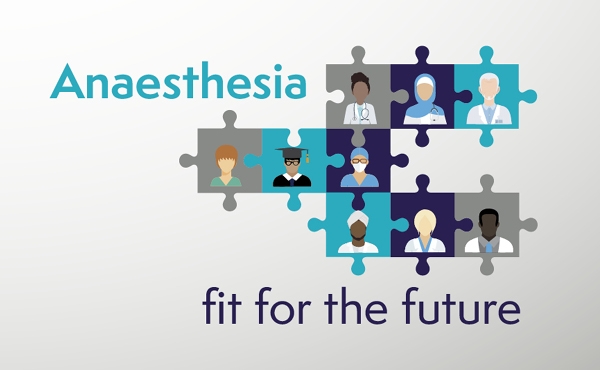Improving retention in anaesthesia
Respected, Valued, Retained – working together to improve retention in anaesthesia
Anaesthesia is facing a perfect storm of workforce shortages, low morale and an ageing workforce.
Our latest Census 2020 reveals a gap of 1400 anaesthetists currently.
The average anaesthetist across all grades treats 750 patients per year, therefore the current shortfall in anaesthetic cover could result in over 1 million procedures being delayed a year, compounding further the current waiting lists and patient experience.
Our members have suffered and continue to suffer high levels of fatigue and burn-out as a result of the pressures of managing COVID-19 patients while still maintaining emergency services and supporting the elective backlog recovery.
The 50 years + age group is now 39% of the workforce meaning that this group will be expected to retire in the next 5-10 years.
While we wait from the Government for long-term and sustainable investment in the NHS workforce, we all must do what we can to retain existing talent and improve the working lives of anaesthetists across all grades and nations.
Our report Respected, valued, retained - working together to improve retention in anaesthesia, warns that one-in-four anaesthetists plan to leave the NHS in the next five years and goes on to investigate the factors affecting retention in anaesthesia and possible solutions to improve retention at individual, employers and systems level.
The factors affecting retention in anaesthesia
The factors affecting retention are complex and multifaceted and our report shows that a collaborative approach with flexibilities from all sides is essential, alongside the steps that Government and healthcare leaders need to take to remove the barriers preventing valuable and experienced staff from staying in work.
The report, which contains survey data from anaesthetists in training to retired anaesthetists, paints a
concerning picture of a workplace culture which does not always facilitate career progression and flexible working, leading valuable and experienced staff to leave often out of frustration with unsustainable workloads and lack of the adjustments required to keep them in work.
Work-life balance and the need for flexibility (or lack of) emerge as two key factors affecting career decisions in anaesthesia.
The report also finds that conversations between staff and managers about career progression and retirement to support succession planning in departments do not happen consistently, leading to cliff edge situations where too little time is left to offer flexibilities required for those who would like to continue to contribute. This is further compounded by perverse pension taxation incentives which essentially encourage doctors to retire, rather than continue to work.
The findings also tell us that decisions about flexibilities cannot be taken in isolation and that tailored solutions need to be discussed across teams to ensure that everyone can benefit from the same flexible approach thus fostering a culture of support and collaboration between those who require adjustments and those who require fewer, if any.
It’s also important for individuals to recognise any changes in cognitive and physical abilities and for staff to be able to have honest conversations with managers about any adjustments that might be required without fear of repercussion on their careers.
The issue of chronic excessive workload is of particular concern and the report makes recommendations for Government and NHS leaders to address this urgently. In the long term this can only be resolved by investing in the expansion of the anaesthetic workforce to fill existing gaps and to ensure it can meet the demands for anaesthetic services driven by population needs. In the short term by ensuring all targets for reducing the waiting lists allow time for staff to recuperate from the effects of the pandemic.
Summary of recommendations for improving retention of staff in anaesthesia
| What individuals can do |
|
| What managers and teams can do |
|
| What systems can do |
|
Watch the virtual roundtable - Addressing the retention challenge in anaesthesia
This roundtable was an opportunity to explore what individuals, managers, employers and systems can do to improve retention in anaesthesia and to hear from newly elected RCoA President, Dr Fiona Donald, about the findings from our project on retention as part of our Anaesthesia - fit for the future campaign.
Speakers:
Chair: Dr William Harrop-Griffiths, RCoA Vice President
Dr Fiona Donald, RCoA President
Angela Walsh OBE, Head Agenda for Change and NHS Reward, NHS England
Chris Dzikiti, National Retention Programme Lead, NHS England and NHS Improvement
Danny Mortimer, Chief Executive, NHS Employers
Dr Vishal Sharma, Chair of the Consultant Committee, British Medical Association


